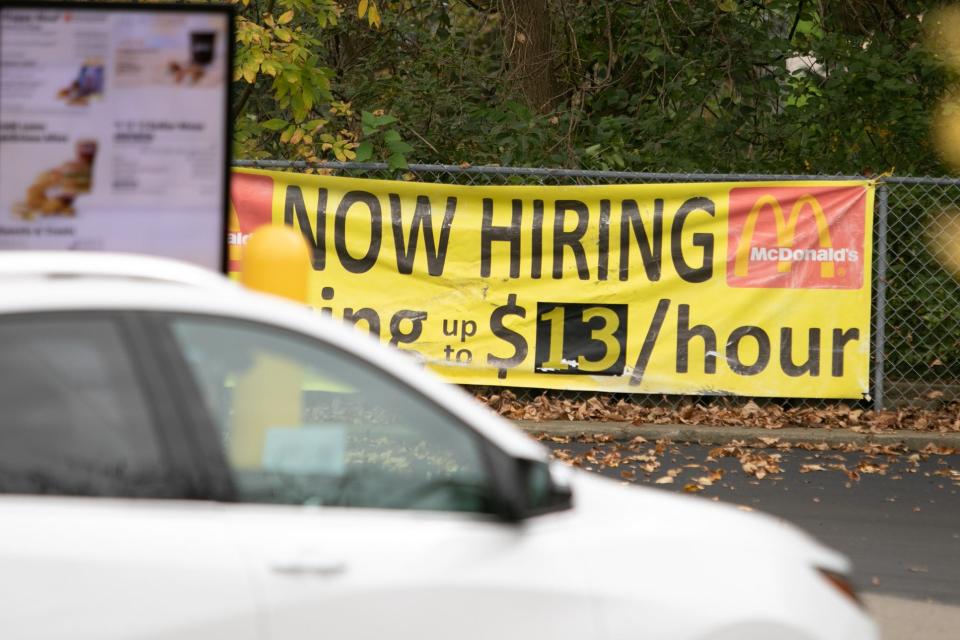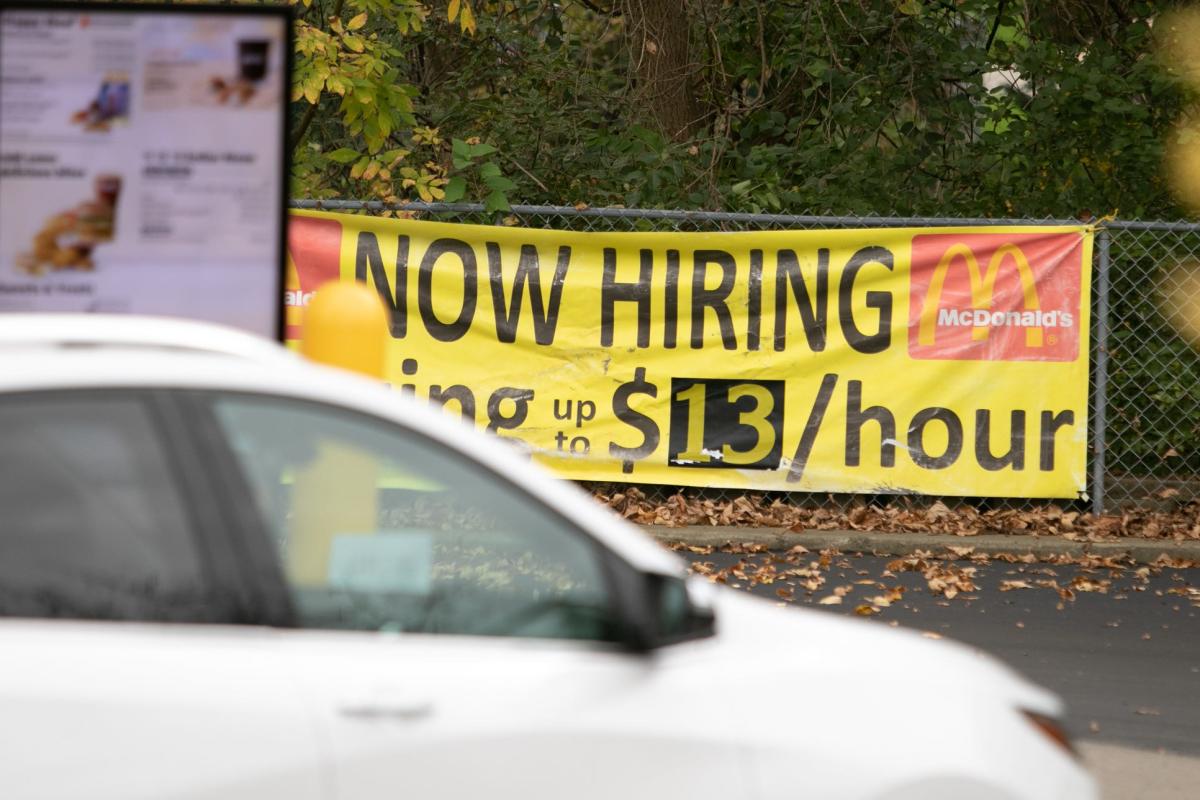Tyler’s 1983 song, “Total Eclipse of the Heart,” is an absolute banger. Beyond that, she got away with making it a seven-minute track at a time when radio dictated the terms of new music with tight constraints.
The album it appeared on? You’ve got to go back and look at the cover for “Faster than the Speed of Night.” The hair. The laser beam going through her head. This is the most 1980s thing you will ever see.
Tyler is a legend, and her 40-year-old song was the eclipse anthem we needed.
Now, onto the mailbag. If you want to submit questions for future mailbags, you can email me or use the Google form at the bottom of the online article page.
Louis Clark: Why is nobody talking about raising the minimum wage in Indiana?
Raising Indiana’s $7.25 minimum wage has long been a nonstarter. Republicans control Indiana and they accept business owners’ arguments that any mandated increase would run them out of business by driving up costs.
Democrats in the past have sought to exploit this issue. But even Democrats aren’t talking about the minimum wage as much as they used to because the weird pandemic-era economy has scrambled the debate.
To get a sense for how strange the issue has become, consider that, in 2017, the City-County Council set a $13-an-hour wage floor for city and county workers. The state bans municipalities from creating regional minimum wages, so Indianapolis Democrats made a show of raising pay for government workers as a way to put pressure on the private sector to at least meet them at $13 an hour.
Seven years later, the $13 minimum wage that city officials were proud of amounts to about $10.29 in 2017 buying power.
Meanwhile, McDonald’s restaurants across the city have neon signs advertising that same $13-an-hour starting pay. Anyone who lives in, or can drive to, Carmel can get at least $15 to work for McDonald’s. Even at those wages, McDonald’s can’t fill jobs and is increasingly turning to kiosks to take orders.

To get another sense for how our idea of wages has changed, look back to the last Indiana gubernatorial election in 2020. Democratic lieutenant governor candidate Linda Lawson called for a $15 minimum wage. Four years later, Democrats would have to propose an $18 minimum to get the same bang — and create a wage that isn’t already readily available at McDonald’s.
The economy is about as close as it gets to full employment. Wage gains have outpaced price increases, especially for people on the lower end of the pay spectrum. Employers have no choice but to keep giving people raises, so the minimum wage fight has lost salience for the moment.
That doesn’t mean it’s dead. Minimum wage increases are popular and Indiana Democrats probably would do well to make an issue of it again. But it’s not as easy to talk about as it was a few years ago.
Attabey Rodríguez Benítez: There’s a building right at end of 16th and Delaware that advertises Harrison Center’s upcoming artist for First Friday alongside a gaping hole in its corner (made at least on a twice-a-year basis). My hypothesis is that the wicked, misaligned street lanes are at fault, fast-tracking some drivers to the building instead of Delaware. Now, to my question: What’s the logic behind the misaligned lanes and why the city hasn’t done anything for this intersection given that a pedestrian crossing is right in at the crosshairs?
I’ve gotten multiple questions about this building, with another person estimating it gets hit by cars monthly. These are slight exaggerations.
Cars have struck the building at 16th and Delaware streets at least five times since 2017, per the city’s Department of Public Works.
The city is planning to convert Delaware from a one-way street to a two-way street as part of a slew of conversions funded by federal grants over the next decade. Delaware will become two-way between Interstate 65 and Fall Creek Parkway South Drive.
The city expects the Delaware conversion to solve the problem of cars crashing into the same building over and over again because it will slow speeds and put north-bound traffic in the right lane, where cars presumably won’t be hurtling toward the building like missiles (though, I’d say, never underestimate reckless drivers).
The project doesn’t have a set timeline yet.
Completely theoretical: If Indiana had a parliamentary system and voters could pick a party instead of individual candidates, what would the split be? Assuming Libertarians and Greens would field a candidate, any other parties and a vote guess?
I love this question, but I have to be honest: I’m not smart enough to answer it.
I threw the question to someone who has spent a lot of time analyzing Indiana election data. “I don’t think it’s really answerable without doing a dissertation-level amount of research,” he said. “One issue is that Indiana doesn’t have party registration. And, the overwhelming majority of people don’t believe any third party can actually win, so vote totals are hard to decipher.”
Nonetheless, the person, who asked not to be named, took a shot at it.
“Relative to other states,” he said, “Indiana is very Libertarian and very Not-Green. If you look at the presidential vote share in the last six elections, Indiana ranks 5th on average in Libertarian vote share.
“Pair that with Donald Rainwater getting over 10% in the last gubernatorial election and I would say that, if I was a Libertarian organizer or analyst and this system was instituted, Indiana would be one of the first states I would invest in.”
Thank you for reading! If you want to send questions for future mailbags, fill out the Google form on the online article page or email james.briggs@indystar.com.
This article originally appeared on Indianapolis Star: COVID scrambled Indiana’s $15 minimum wage debate
